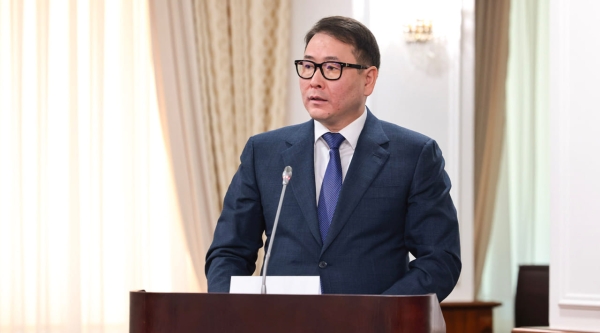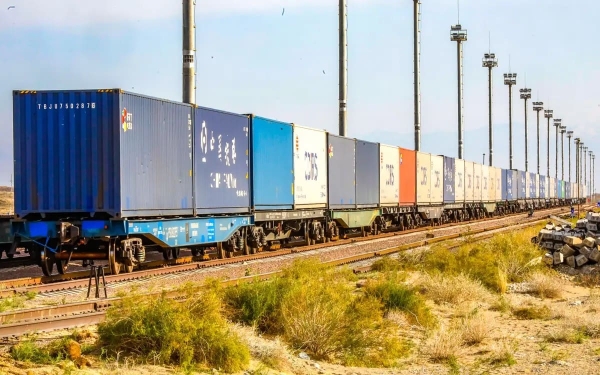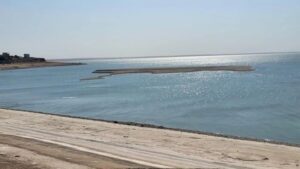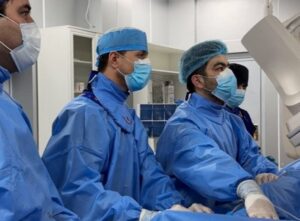Kazakhstan is set to enhance its export potential with the development of cross-border transport and logistics hubs. Arman Shakkaliyev, Minister of Trade and Integration, presented key plans for these hubs at a government meeting chaired by Olzhas Bektenov. These developments aim to boost the export of non-resource goods by 30%, accelerate trade interactions with neighboring countries, and simplify logistics for businesses.

The creation of these hubs aligns with the Concept for the Development of Kazakhstan’s Transport and Logistics Potential until 2030. The initiative focuses on building transport, logistics, and trade centers across Kazakhstan, particularly at the borders with China, Kyrgyzstan, Uzbekistan, Russia, and the Caspian coast. The goal is to modernize trade and logistical systems and improve Kazakhstan’s position within Central Asia and the Caspian region.
One of the key projects is the Industrial Trade and Logistics Complex (ITLC), strategically located at the Karasu checkpoint in Kazakhstan, near the Ak-Tilek checkpoint in Kyrgyzstan. This area is part of the major international road corridor connecting Western Europe to Western China. The ITLC will serve as a hub for storage, product preparation, and redistribution of goods, with simplified border systems and a new bridge to relieve existing traffic at the checkpoints. Construction is scheduled to begin in 2025.
The International Center for Industrial Cooperation “Central Asia”, to be located near the Atameken (Kazakhstan) and Gulistan (Uzbekistan) checkpoints, will play a pivotal role in the consolidation, processing, and distribution of cargo flows. This facility is designed to reduce logistics costs, streamline the supply chain, and enhance trade relations, particularly within the North-South corridor. The center will focus on industries such as agriculture, mechanical engineering, pharmaceuticals, chemicals, and textiles, providing a major boost to regional production.

The Eurasia Cross-Border Trade Center will be positioned near the Uralsk airport in Kazakhstan, facilitating cargo flows between Kazakhstan and Russia and further extending into Eastern Europe. This project, with a planned launch in 2026, aims to improve the efficiency of regional trade by promoting investment in industries such as paints, coatings, and plastic production. The center is expected to generate significant macroeconomic benefits for the West Kazakhstan region, reducing national economic costs for goods promotion by 5%-10%.
A cornerstone project for Kazakhstan’s transit infrastructure is the Khorgos Hub, which links Kazakhstan with China and is part of the broader Belt and Road Initiative. This hub will increase export volumes and foster industrial cooperation between the two countries. It aims to streamline the movement of goods and promote further economic integration.
In the Caspian region, the Caspian Hub will target countries with a population of over 100 million. This hub will focus on container storage, transloading, and providing services for handling goods along the Trans-Caspian International Transport Route (TITR). A key part of the project is the Aktau Seaport Container Hub, set for completion in the second quarter of 2025. This hub is expected to increase the volume of transit cargo between China and Europe. Additionally, the Sarzha Multifunctional Marine Terminal at the Kuryk port will enhance Kazakhstan’s logistics capacity, with a planned completion date in 2026.
Shakkaliyev emphasized the importance of international cooperation, noting the completion of organizational steps and intergovernmental agreements with Uzbekistan and Kyrgyzstan. These partnerships are essential for the successful implementation of these hubs, which will drive Kazakhstan’s role in transcontinental economic corridors and support trade growth, industrial development, and improved logistics infrastructure.




